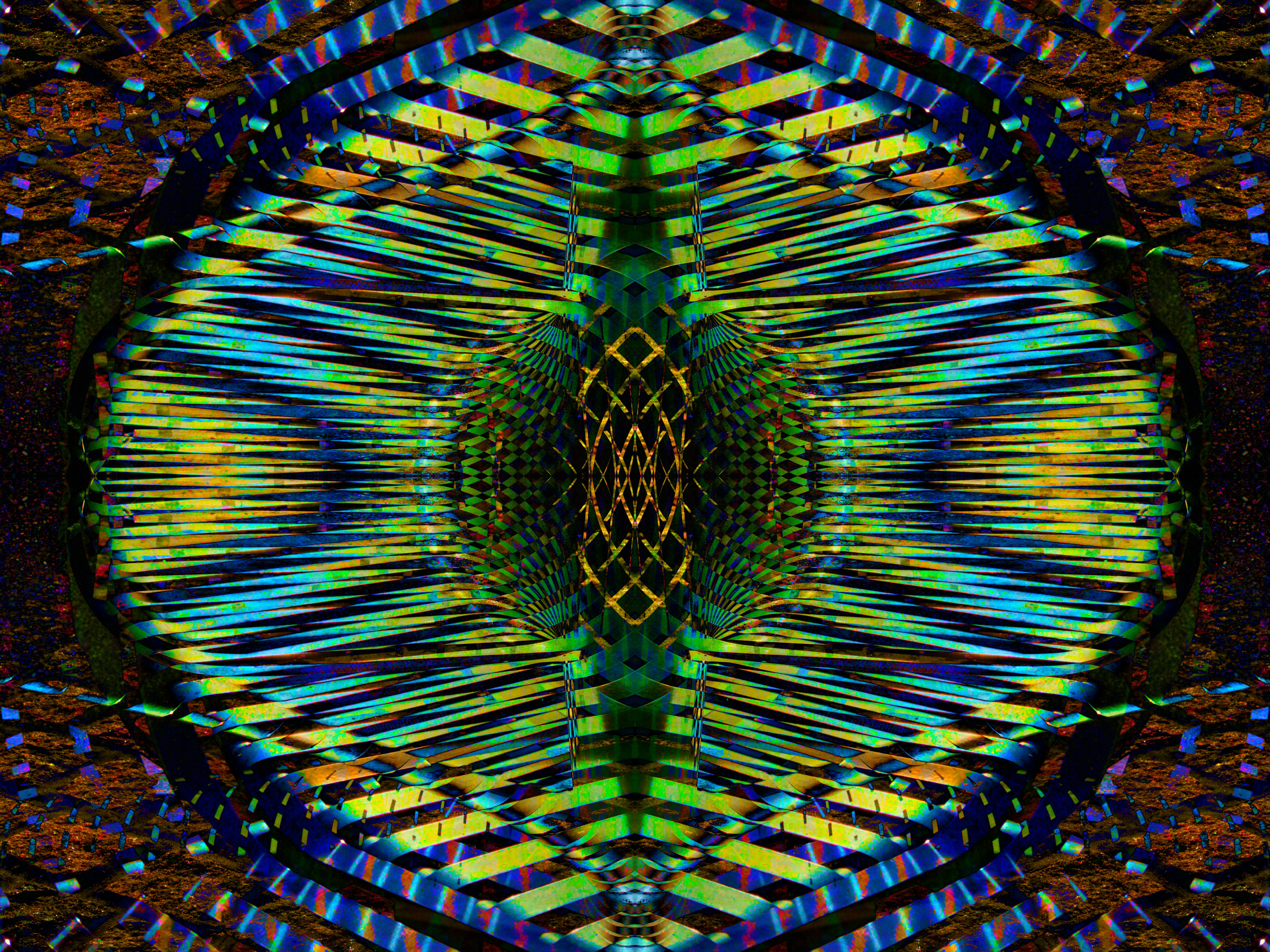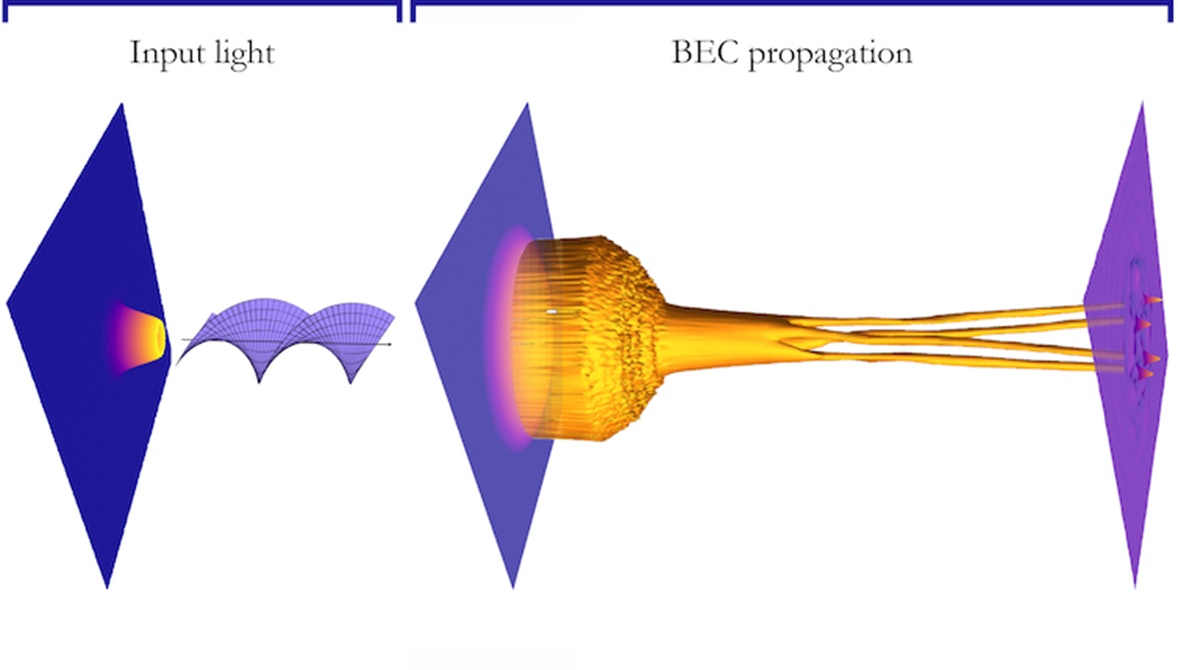
Getting atoms to do what you want isn’t easy — but it’s at the heart of a lot of ground-breaking research in physics.
Creating and controlling the behavior of new forms of matter is of particular interest and an active area of research. Our new study, published in Physical Review Letters, has uncovered a brand new way of sculpting ultra-cold atoms into different shapes using laser light.
Ultra-cold atoms cooled to temperatures close to absolute zero (-273 degrees Celsius) are of great interest to researchers as they allow them to see and explore physical phenomena that would otherwise be impossible. At these temperatures, cooler than outer space, groups of atoms form a new state of matter (not solid, liquid, or gas) known as Bose-Einstein condensates. In 2001, physicists were awarded the Nobel prize for generating such a condensate.
The defining feature of a Bose-Einstein condensate is that its atoms behave very differently from what we normally expect. Instead of acting as independent particles, they all have the same (very low) energy and are coordinated with each other.
This is similar to the difference between photons (light particles) coming from the Sun, which may have many different wavelengths (energies) and oscillate independently, and those in laser beams, which all have the same wavelength and oscillate together.
In this new state of matter, the atoms act much more like a single, wave-like structure than a group of individual particles. Researchers have demonstrated wave-like interference patterns between two different Bose-Einstein condensates and even produce moving “BEC droplets.” The latter can be considered the atomic equivalent of a laser beam.
Moving droplets
In our latest study, performed with our colleagues Gordon Robb and Gian-Luca Oppo, we investigated how specially shaped laser beams can be used to manipulate ultracold atoms of a Bose-Einstein condensate. Using light to move objects is not new: When light falls on an object, it can exert a (very small) force. This radiation pressure is the principle behind the idea of solar sails, where the force exerted by sunlight on large mirrors can be used to propel a spacecraft through space.
In this study, however, we used a particular type of light capable of not just “pushing” the atoms but also rotating them around, a bit like an “optical spanner.” These laser beams look like bright rings (or doughnuts) rather than spots, and they have a twisted (helical) wavefront, as shown in the image below:

Under the correct conditions, when such twisted light is shone onto a moving Bose-Einstein condensate, the atoms are first attracted toward the bright ring before being rotated around it. As the atoms rotate, both light and atoms start to form droplets that orbit the original direction of the laser beam before being ejected outwards, away from the ring.
The number of droplets is equal to twice the number of light twists. By changing the number or direction of the twists in the initial laser beam, we had full control over the number of droplets that formed and the speed and direction of their subsequent rotation (see the image below). We could even prevent the atomic droplets from escaping from the ring so that they continued to orbit for much longer, producing a form of ultra-cold atomic current.

Ultra-cold atomic currents
This approach of shining twisted light through ultra-cold atoms opens a new and simple way of controlling and sculpting matter into unconventional and complex shapes.
One of the most exciting potential applications of Bose-Einstein condensates is the generation of “atomtronic circuits,” where matter waves of ultra-cold atoms are guided and manipulated by optical and/or magnetic fields to form advanced equivalents of electronic circuits and devices such as transistors and diodes. Being able to reliably manipulate a Bose-Einstein condensate’s shape will ultimately help create atomtronic circuits.
Our ultra-cold atoms, acting here like an “atomtronic superconducting quantum interference device,” have the potential to provide far superior devices than conventional electronics. That’s because neutral atoms result in less information loss than electrons that normally make up current. We also can change the features of the device more easily.
Most excitingly, however, is the fact that our method allows us the possibility to produce complex atomtronic circuits that would simply be impossible to design with normal materials. This could help design highly controllable and easily reconfigurable quantum sensors capable of measuring tiny magnetic fields that would otherwise be immeasurable. Such sensors would be useful in areas ranging from basic physics research to discovering new materials or measuring signals from the brain.
This article was originally published on The Conversation by Grant Henderson and Alison Yao at the University of Strathclyde. Read the original article here.







